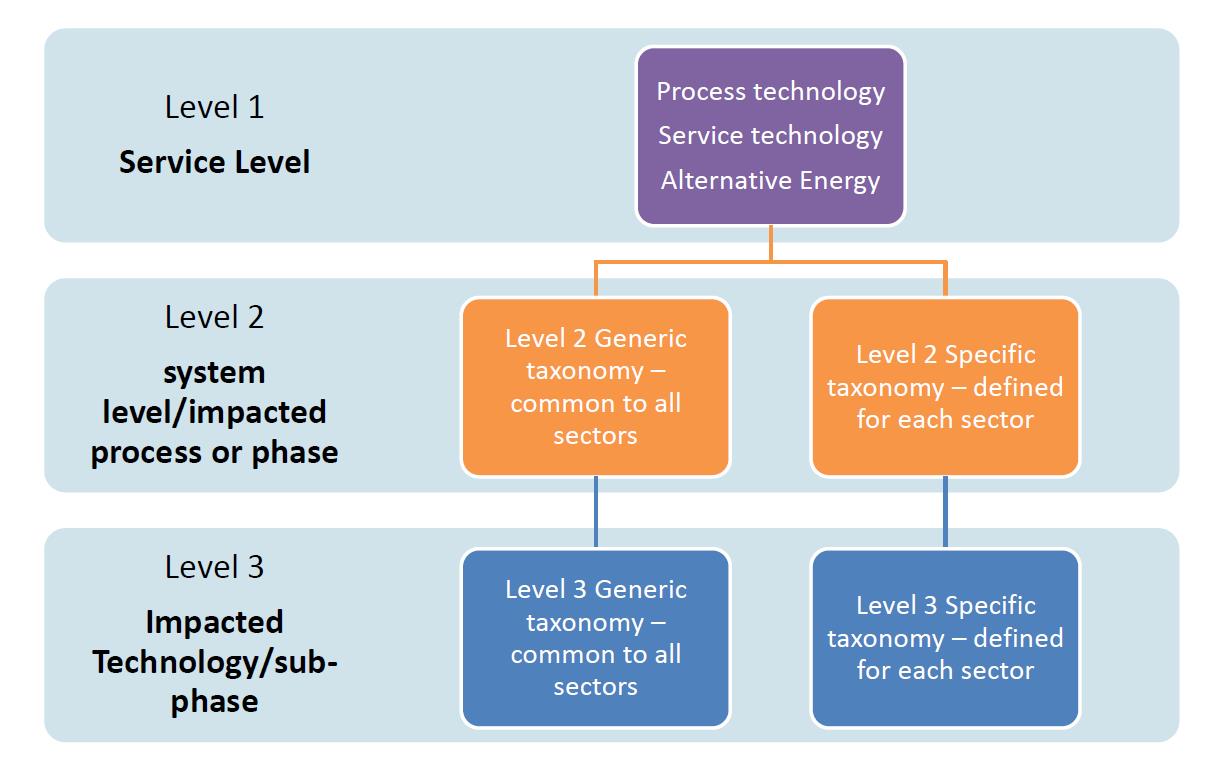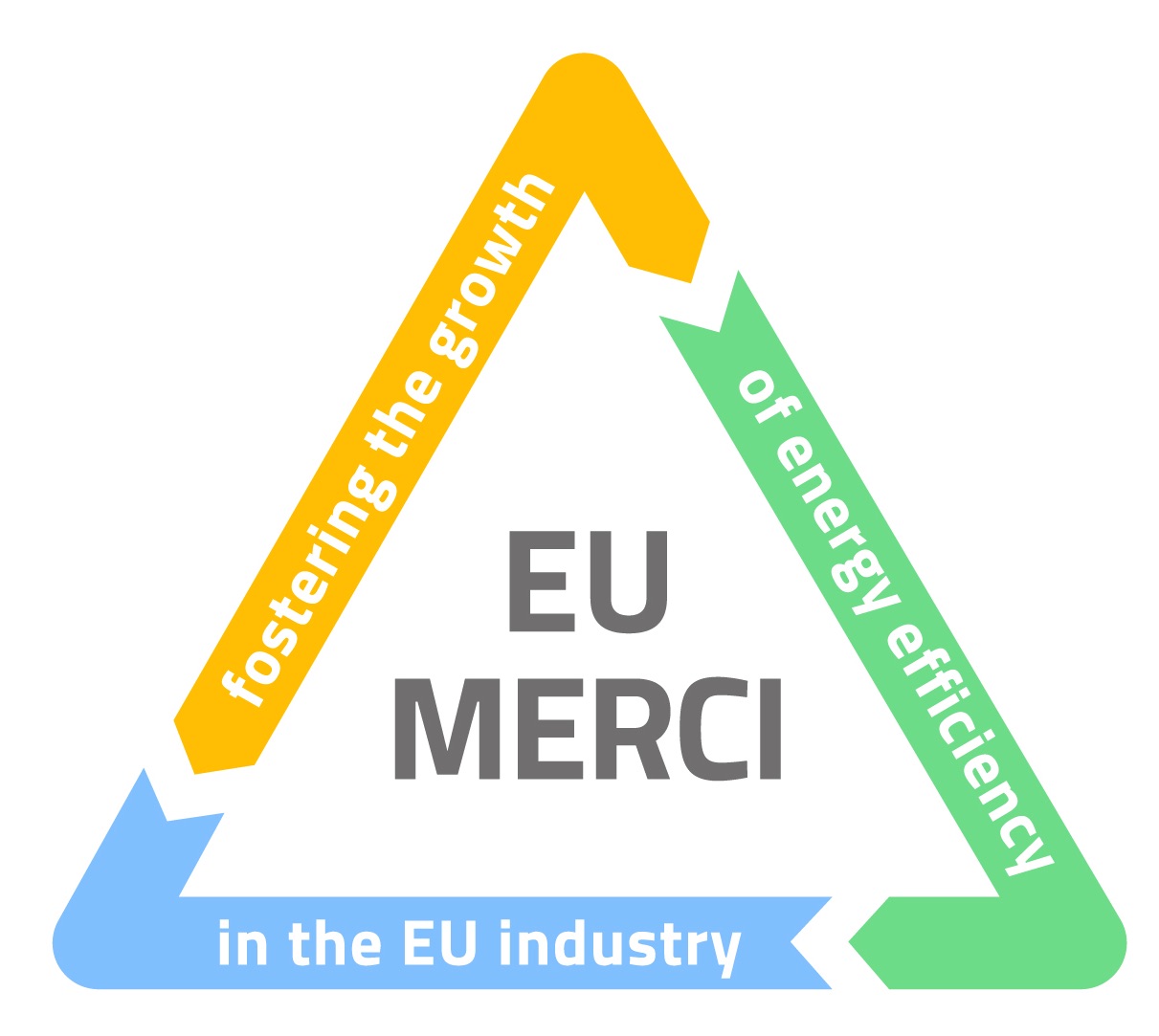Definition of the Taxonomy
Taxonomy: it has been built in order to categorize the energy efficiency measures and enable a consistent comparison and the analysis of the different types of measures coming from the national data sets. The taxonomy gives a clear understanding of what component, process and system was affected by each individual measure described in the dataset. Two types of taxonomy have been developed: a generic taxonomy, which is not related to a specific sector and process and thus allow a basic categorization of the measures, and a specific taxonomy aimed at defining the production process and/or sub-process in each sector;
L1: the part of the plant where the measure has been applied to (e.g. "Process technology" or "Service technology" or "Alternative Energy production").
L2: the phase of the process where the measure has been put in place, both in general terms applicable to all sectors ("Generic taxonomy", e.g. "Heat recovery and cooling") and in sector-specific terms ("Specific taxonomy", e.g. "Papermaking").
L3: the sub-phase of the process or the technology involved in the measure, both in general terms applicable to all sectors ("Generic taxonomy", e.g. "Heat recovery by heat exchanger") and in sector-specific terms ("Specific taxonomy", e.g. "Drying section").
The three levels have been divided into "A" and "B" in order to take into account complex measure ("Combined case") that have effects on more sections of the plant or involve more technologies.

Type of Measure N/R/M
This field defines the type of measure, i.e. whether it is a new Installation (N), a replacement of an existing technology (R), or maintenance of an existing technology (M). This field can be defined for each Level 3 entry for both the generic and the specific taxonomy.
